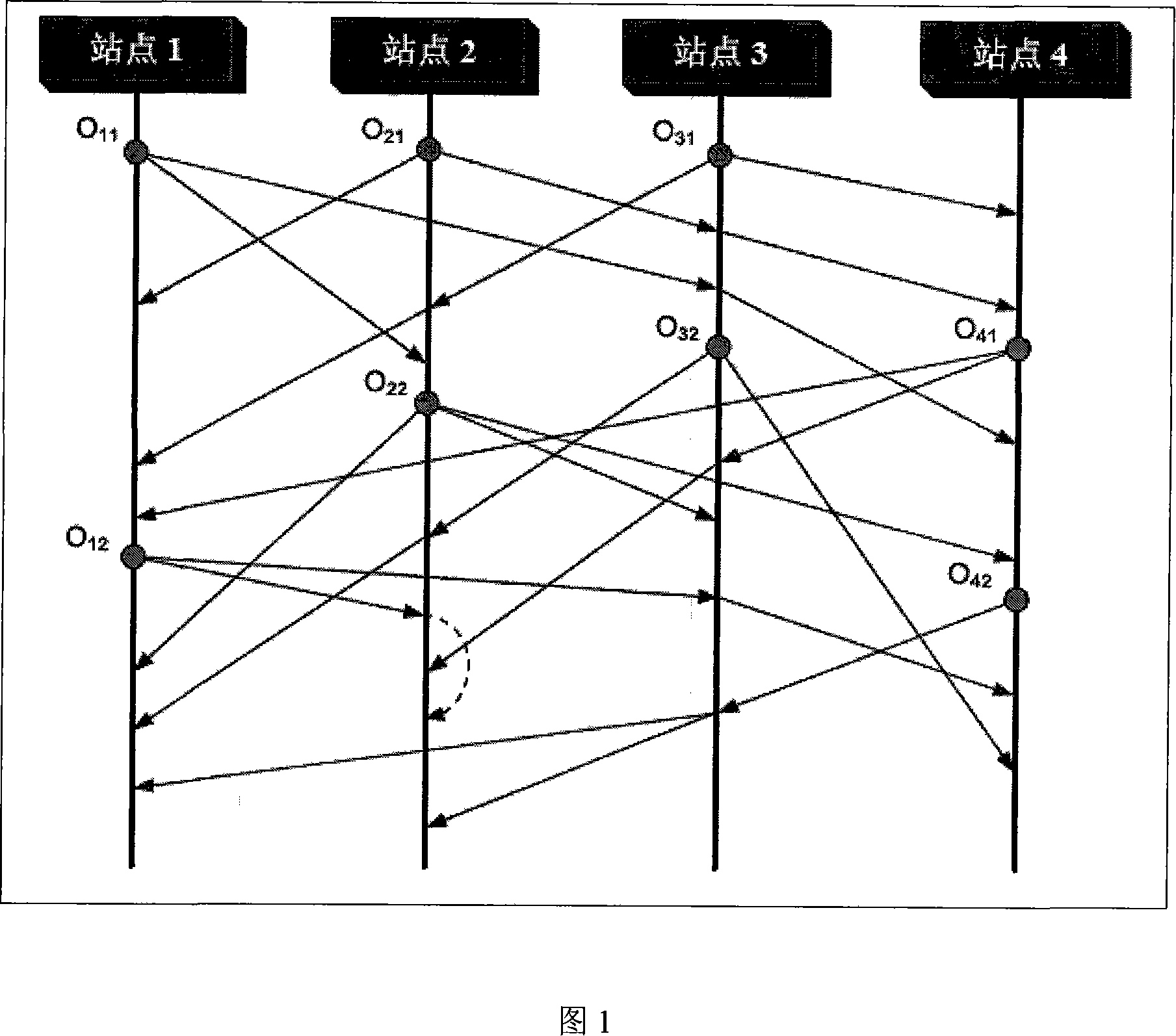A cause and effect concurrent detection method for large-scale cooperative environment
A collaborative environment and detection method technology, applied in special data processing applications, instruments, electrical digital data processing, etc., can solve problems such as unreliable network environment, unreliable collaborative users, etc.
- Summary
- Abstract
- Description
- Claims
- Application Information
AI Technical Summary
Problems solved by technology
Method used
Image
Examples
Embodiment Construction
[0141] The following two examples are used to introduce the causal concurrency detection process in detail.
[0142] Example 1 illustrates the detailed process of judging whether an operation is causally ready based on the timestamp of the direct causal sequence vector. Through analysis, we find that one of the operations is not causally ready, while the other is causally ready.
[0143] Example 2 is a detailed demonstration of the execution process of FindConcurrentHistoryOperations, through which we can find out all operations concurrent with the current operation in the history.
[0144] Example 1
[0145] As shown in Figure 1, consider the operation O 12 Execution on site 2:
[0146] 1. When operating O 12 Just arrived at site 2: At this point, the operations that have been performed on site 2 are O 11 , O 21 , O 31 , O 22 and O 32 , whose state vector is SV s2 =[(1,1), (2,2), (3,2)]. Operation O 12 There is a component (4, 1) in the direct causal sequence vecto...
PUM
 Login to View More
Login to View More Abstract
Description
Claims
Application Information
 Login to View More
Login to View More - R&D
- Intellectual Property
- Life Sciences
- Materials
- Tech Scout
- Unparalleled Data Quality
- Higher Quality Content
- 60% Fewer Hallucinations
Browse by: Latest US Patents, China's latest patents, Technical Efficacy Thesaurus, Application Domain, Technology Topic, Popular Technical Reports.
© 2025 PatSnap. All rights reserved.Legal|Privacy policy|Modern Slavery Act Transparency Statement|Sitemap|About US| Contact US: help@patsnap.com



